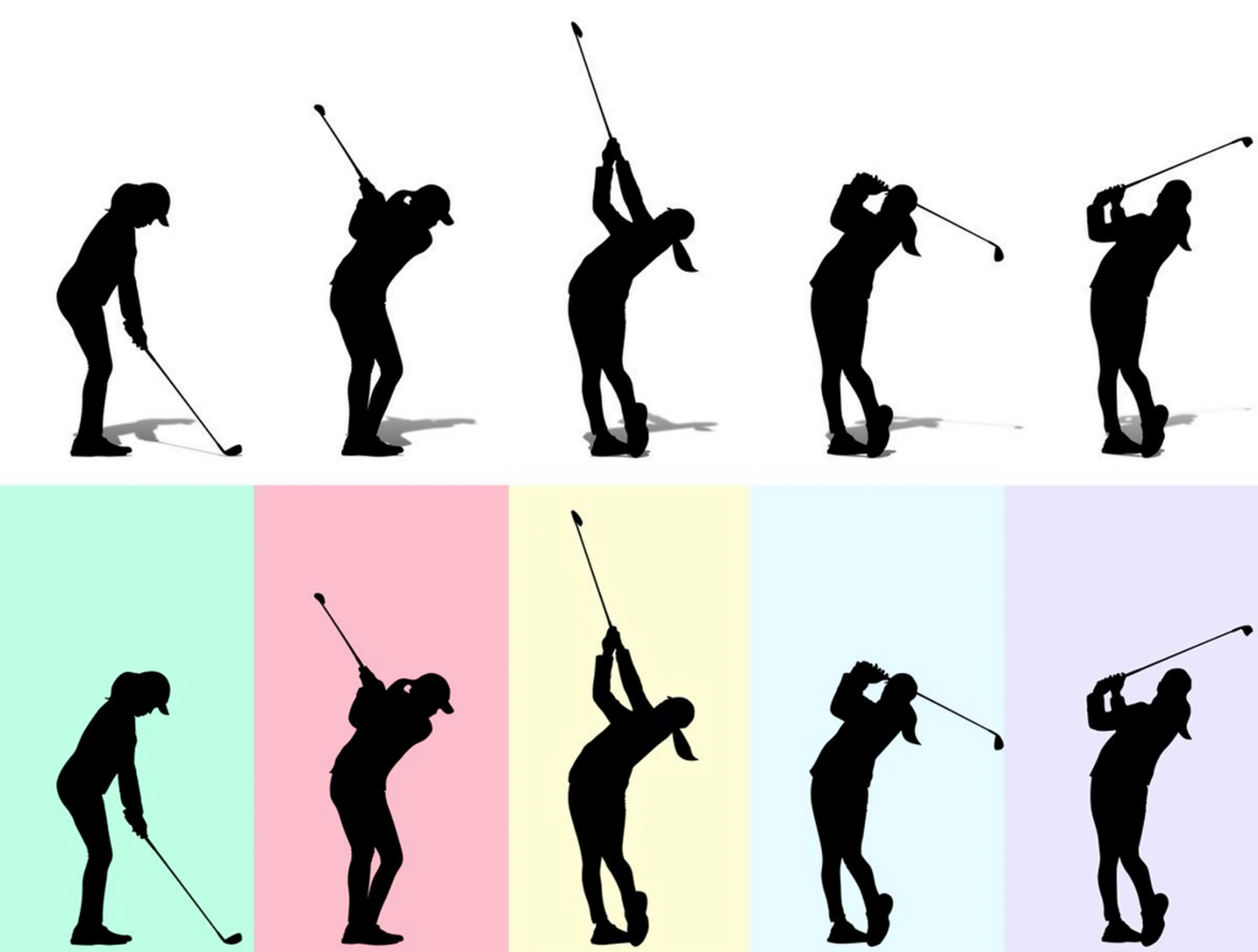Are you new to golf and not sure where to start with your basic golf swing? There is so much information out there that it can be difficult for new golfers to know where to start.
So what is the basic golf swing made up of?
In your golf swing, the main aspects of a basic golf swing are the stance, grip, backswing, downswing, and follow-Through. I know this sounds like a lot, but we will break it down so it’s easier.

THE STANCE
One of the key foundations is mastering your stance. It’s more straightforward than you might think:
- Positioning: Plant your feet roughly shoulder-width apart and ensure they align parallel to your starting direction.
- Stability: Stand athletically, feeling grounded, with knees slightly bent, and weight centred.
- Posture: Lean from the waist with your hips pushed back, allowing your arms to dangle naturally. Visualise forming a triangle with your chest and arms.
- Ball Placement: Depending on your club, the ball’s position will vary. For longer clubs, position the ball closer to your lead foot; for shorter ones, like the pitching wedge, position it more centrally.
The Grip
Ten-Finger (Baseball) Grip
Ten-Finger (Baseball) Grip
As the name suggests, the Ten-Finger grip, often referred to as the Baseball grip, involves all ten fingers holding the club. Each finger makes direct contact with the club’s grip.
Advantages:
• It is often recommended for beginners as it feels the most natural and straightforward.
• It Helps those with weaker wrists or arthritis, as the grip spreads the pressure evenly across both hands.
• It can provide more power as all fingers are in contact with the club.
Disadvantages:
• It might lead to less control over the club because the hands can sometimes work independently.
• It could lead to a clubface that closes too quickly, potentially leading to hooks.
•Popular Among Mainly beginners, though some professionals, like Bob Estes, have used it.
Overlap Grip (Vardon Grip)
- Named after the great Harry Vardon, who popularized it, this grip involves placing the pinkie finger of your trailing hand (right hand for right-handed players) between the index and middle finger of your leading hand.
Advantages:
- Helps unify the hands, allowing them to work together.
- Increases wrist action, potentially adding more clubhead speed.
- Preferred by players with larger hands.
Disadvantages:
- Might be uncomfortable for those with smaller hands or weaker fingers.
- Popular Among A significant majority of professional golfers use this grip, including legends like Jack Nicklaus and Tiger Woods.
Interlock Grip
- Description: For the Interlock grip, the pinkie of the trailing hand and the index finger of the lead hand interlock or mesh together.
Advantages:
- Tends to unify the hands even more than the overlap grip.
- Often preferred by players with smaller hands, as the interlocking fingers ensure both hands stay closely connected.
- Offers a very secure feeling.
Disadvantages:
- Might feel a bit restrictive for those with larger hands.
- The interlocked fingers can lead to tension, possibly reducing wrist action.
- Popular Among Notable players like Jack Nicklaus and Tiger Woods have used this grip, though it’s not as widely adopted as the Overlap grip.
Choosing the right grip is essential, as it’s the only part of the body in direct contact with the club. Your grip can influence ball flight, clubface orientation, and swing path. As such, it’s crucial to experiment with each grip to determine which one offers the best combination of comfort, control, and power for your specific needs. As with many aspects of golf, personal comfort and effectiveness are more important than strict adherence to conventional wisdom.
MASTERING THE BASIC GOLF SWING SETUP: Step-by-Step
1.The Takeaway: Think of this as the opening act. Keep your body and arms in sync and avoid over-relying on wrist action. Aim for the club to be parallel to your target when waist high.
2.The Backswing: As you progress the club further back, ensure it’s on a consistent path, not veering too much inward. Rotate those hips and shoulders, maintaining club position.
3.The Downswing: The moment of power! Initiate the motion from your hips, which in turn drives the rest of your body, producing a powerful, accurate shot.
4.The Follow-Through: Keep the energy flowing even after the ball is hit. Continue rotating and end with the club elevated, ensuring a consistent, fluid motion.
Feel Like Golf – The Best Golf Course Finder Map in the UK
If you’re looking for an all-in-one resource for everything golf-related, as well as information on various courses, you no longer have to google “golf courses near me”.
Feel like golf helps you find the right courses based on your budget and location. Have a look at the golf course map to find an available course. If you’re looking to learn more about the game, Feel Like Golf’s team of experts is always on hand to answer your questions.
